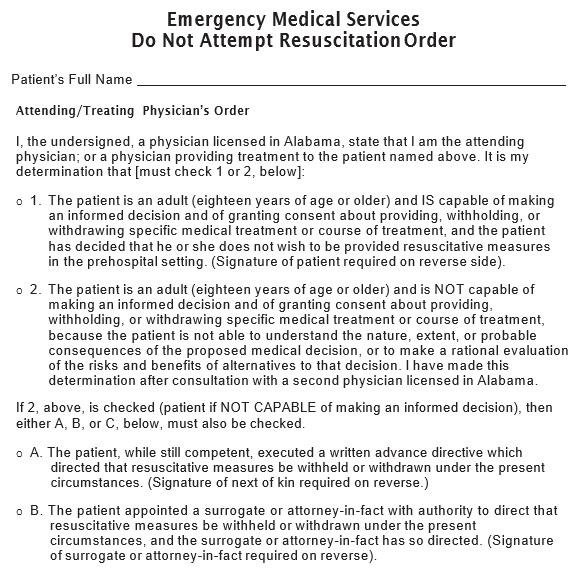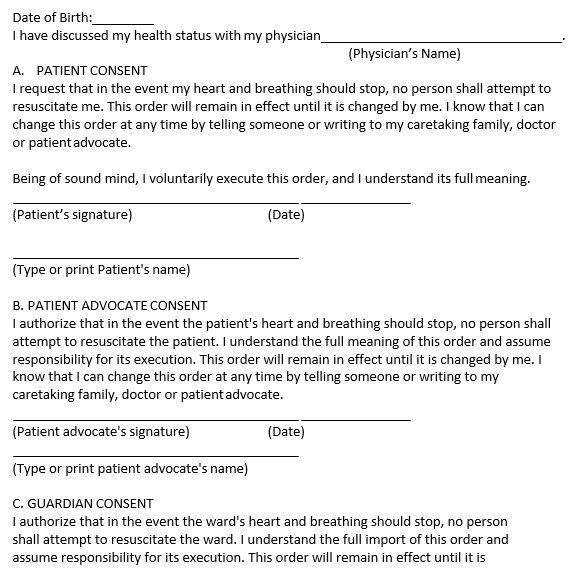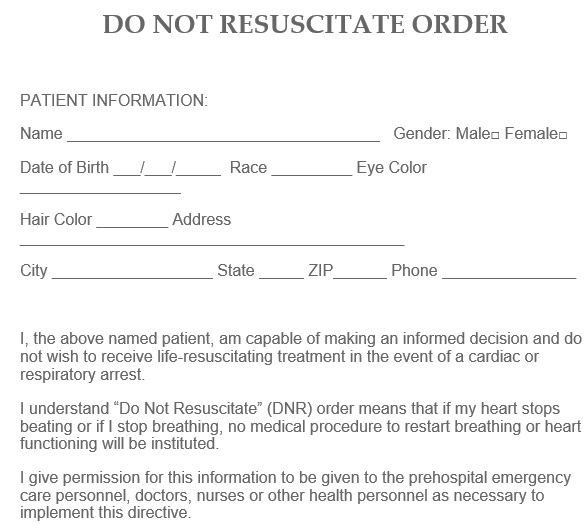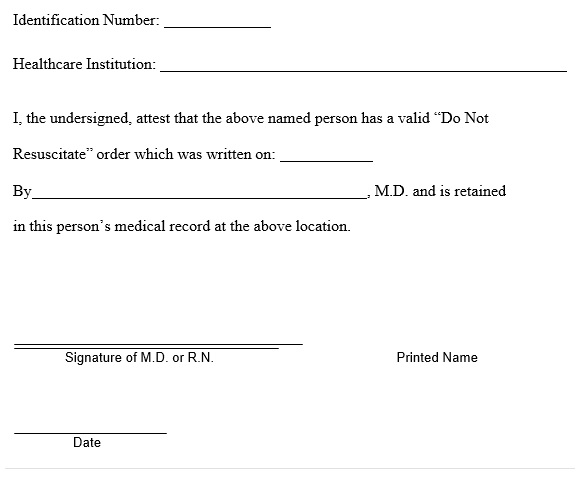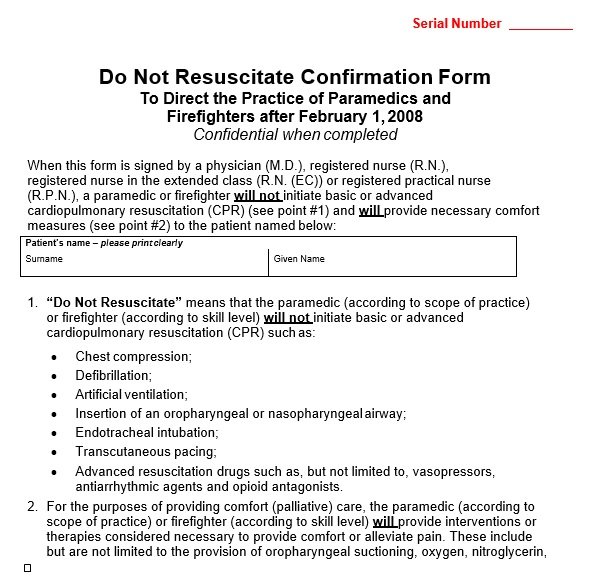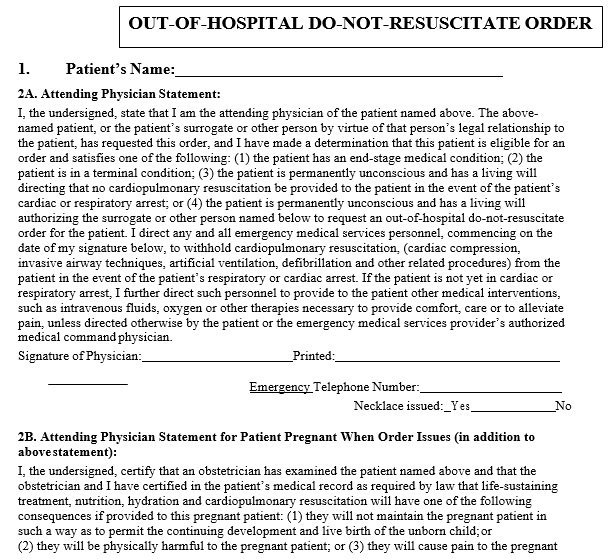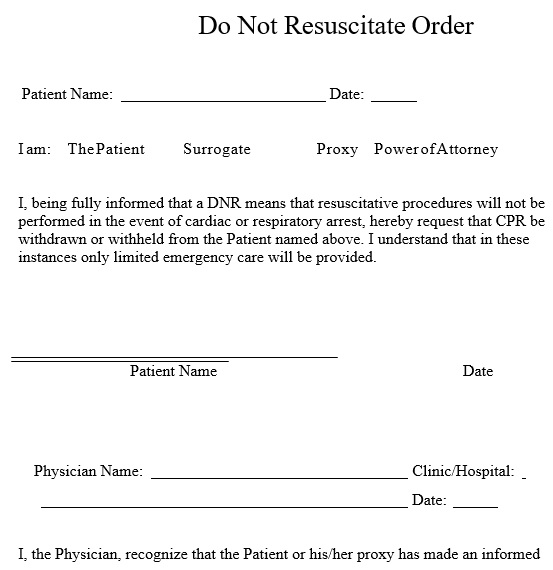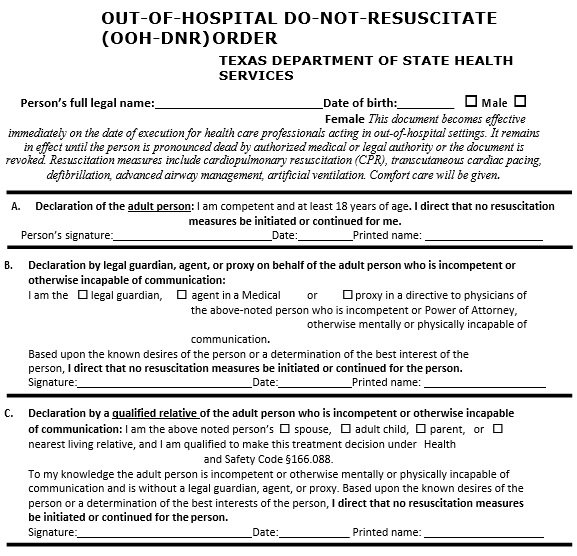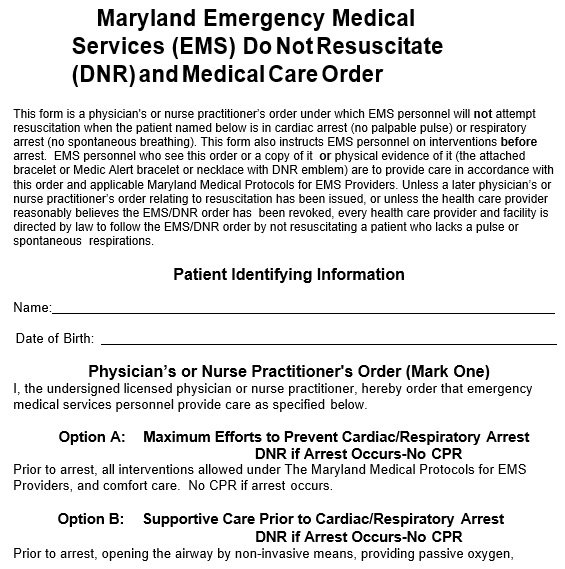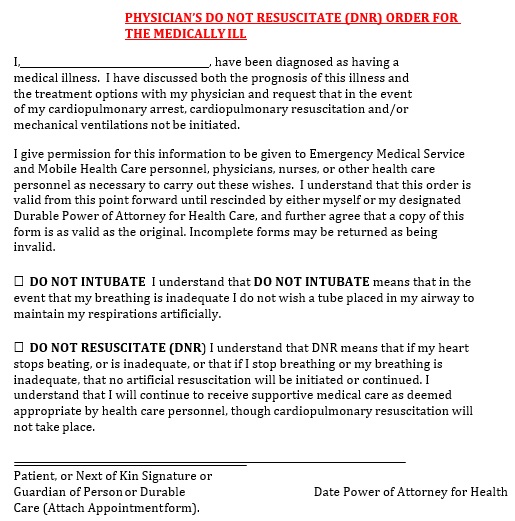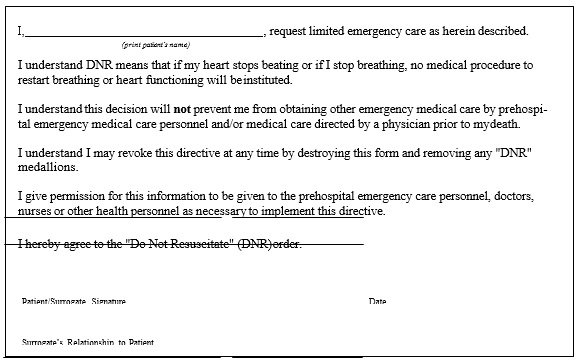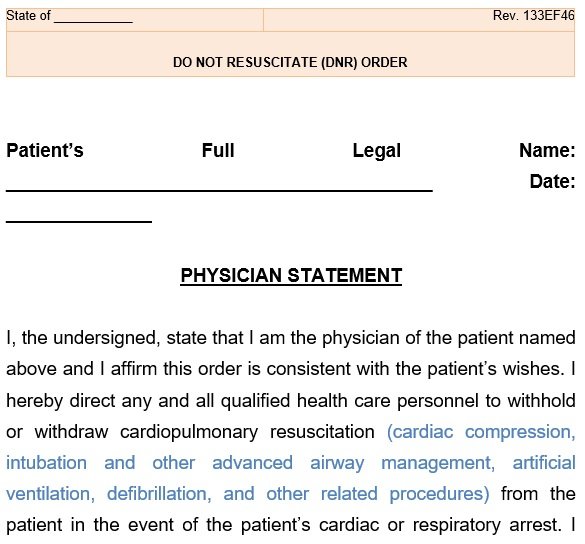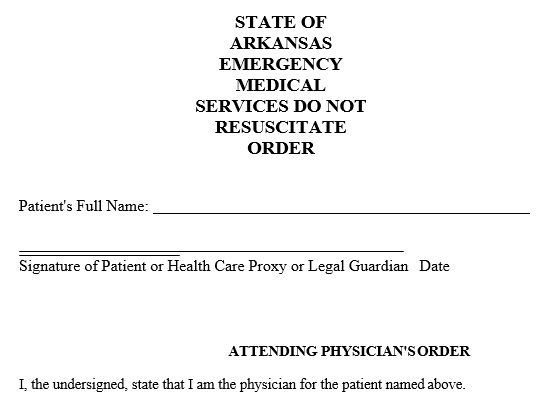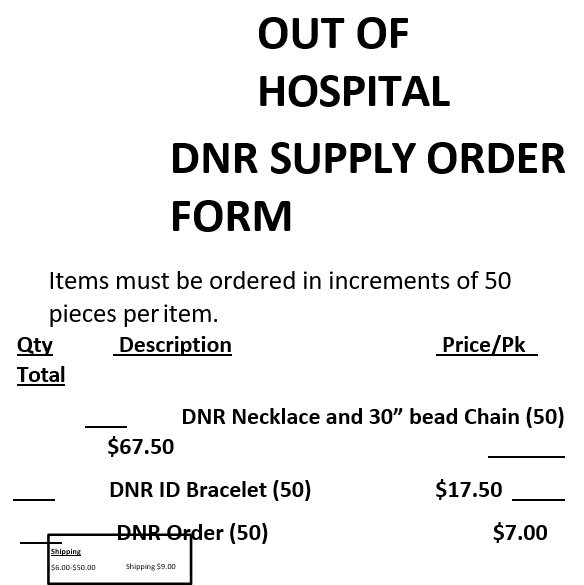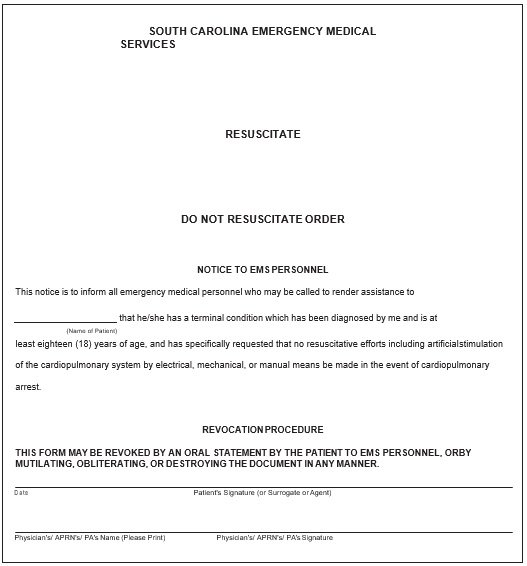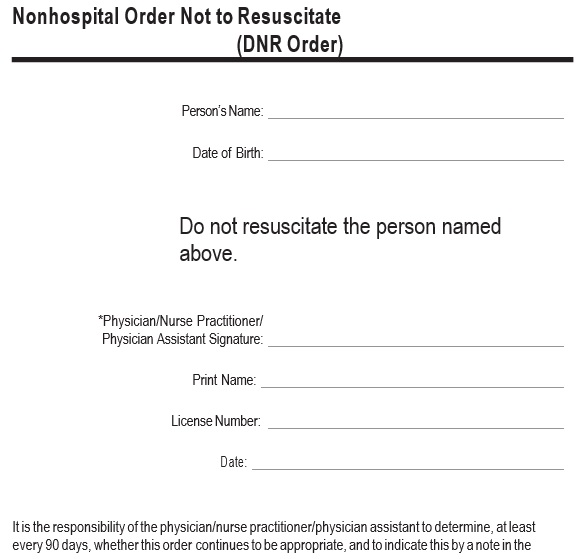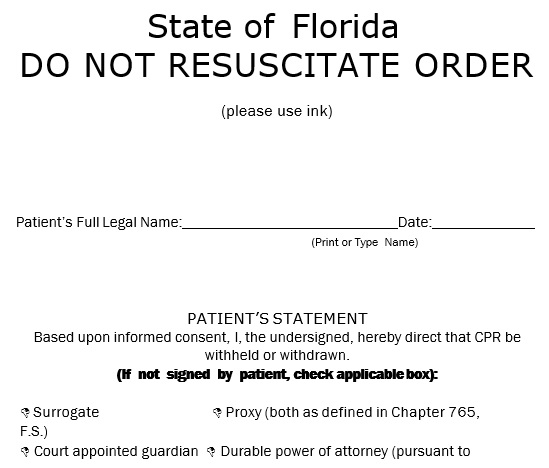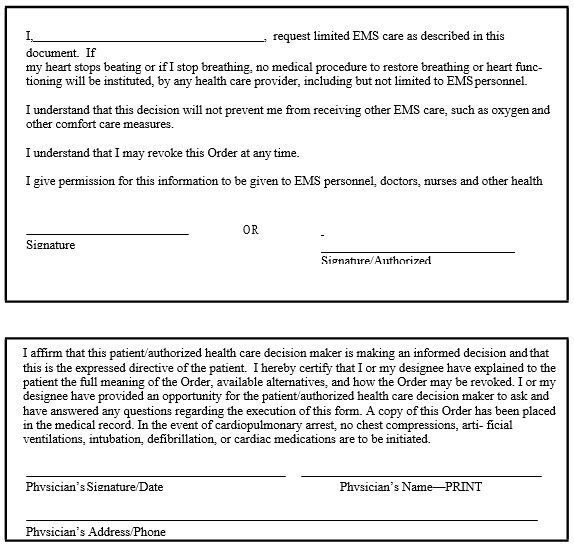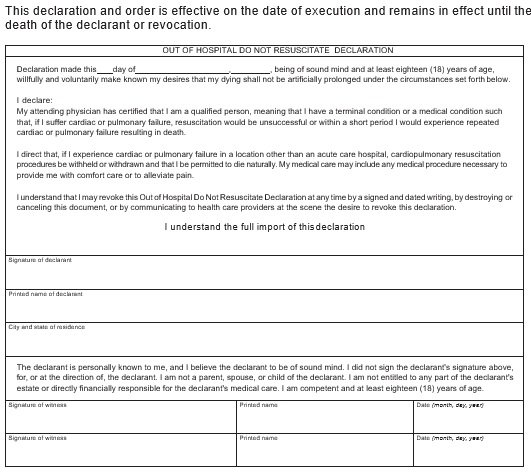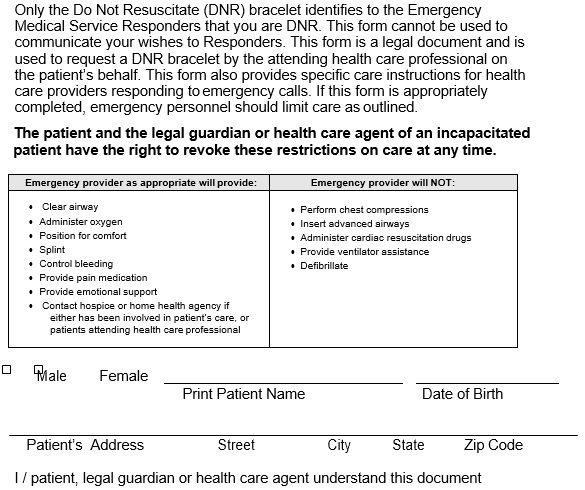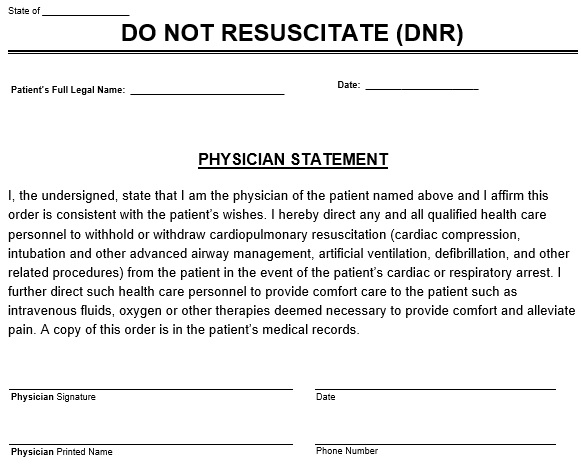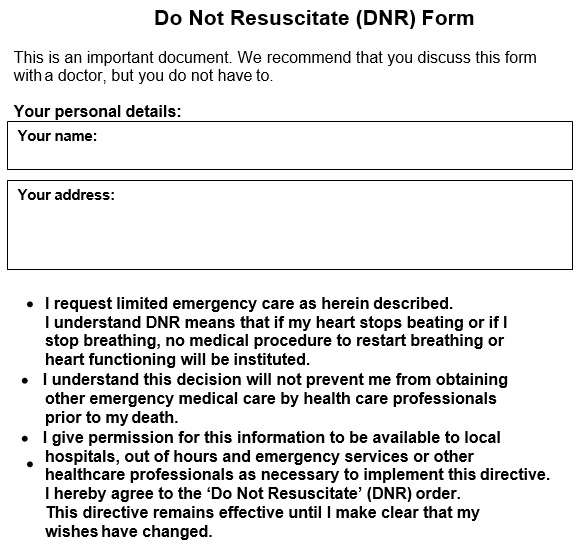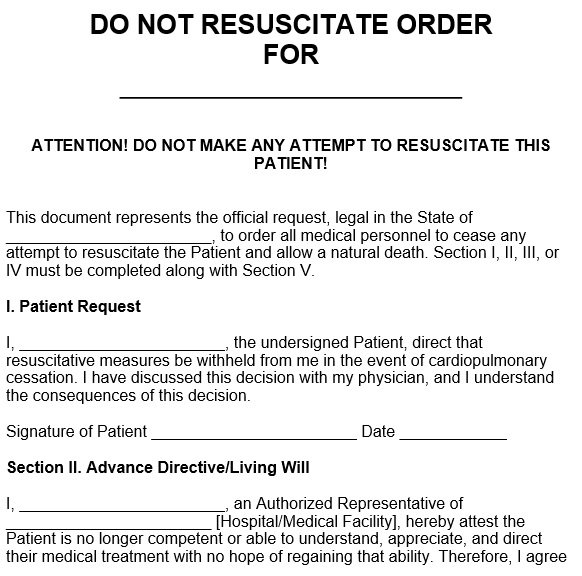Do not resuscitate form is a document created by doctors. It contains instructions for doctors not to perform CPR (Cardiopulmonary Resuscitation) when patient stop breathing or their heart stops beating. In an ideal situation, before an emergency happens, a DNR order should already exist.
What is a DNR (Do Not Resuscitate) form?
A DNR form is basically an end-of-life medical directive. It provides instructions to the health care professionals regarding the life-sustaining treatment during the emergency situation of the patient. By having this document, patients make sure that no resuscitation methods will be performed in case of a medical emergency.
Furthermore, before signing this document, you must understand what a DNR is. It is a specific document that governs distinct forms of treatment. Some other names of DNR form are;
- DNAR (Do Not Attempt Resuscitation)
- AND (Allow Natural Death)
- POLST (Physician Orders for Life-Sustaining Treatment)
- MOLST (Medical Orders for Life-Sustaining Treatment)
What does not for resuscitation mean?
A do not resuscitate form is an official order i.e. either oral or written. It depends on your country. It states that the patient doesn’t want to receive cardiopulmonary resuscitation when their heart stops beating. In some cases, this form protects other medical interventions. However, the legal processes that surround these orders may vary. The orders generally come from healthcare providers depend on their medical judgment and the values and wishes of the patient.
Medical institutions describe a DNR document in the context of survival from CPR. This way, they can address the outcomes and concerns of their patient. They compare the survival of patients who have multiple chronic illnesses depending on the information mentioned in the document. Liver disease, lung, kidney or heart disease, widespread infection, and cancer are included in such illnesses. According to studies;
- The survival rate of the patients suffering from heart disease, kidney diseases, or multiple chronic illnesses after CPR is close to or the same as the average CPR survival rate.
- The survival rate of the patients of liver disease, kidney disease, widespread infection, or cancer after CPR is half as good as the average rate.
- The survival rate after CPR of residents in nursing homes is about half to three-quarters of the average rate.
Furthermore, the patients that receive DNR orders may involve in cardiopulmonary resuscitation or CPR. You should know the following risks before signing such an order;
- Physical injuries that may include broken bones affect 13% of all CPR patients. Some people also experienced broken cartilages that sound a lot like breaking bones.
- Before and after CPR, some patients sustain mental problems.
Different types of advanced directives:
Advanced directives are the different types of treatment that you may receive on the basis of your condition. Instead of do not resuscitate form, these advance directives can;
- Explain the type of care you select if you are suffering from a disease that you can’t recover from.
- It demonstrates the type of care that you will need after becoming permanently unconscious.
- It tells the physician that you don’t want any type of treatment or conversely. It states that you need a certain type of treatment no matter how dire your illness is.
You should consider the following advanced directives instead of opting do not resuscitate form;
Living will
In case, you are permanently unconscious or terminally ill, this document explains that what treatments you want. In the form of medical treatments, these treatments can come that help you live longer. This document doesn’t allow someone to decide on your behalf.
Durable Power of Attorney
It is also known as a medical power of Attorney. It specifies whom you have selected to make decisions on your behalf. Anytime, if you become unconscious, it is applicable and you don’t have to make medical decisions.
As compare to living will, DPA is powerful. But, it may not be the best choice if you don’t have anyone whom you can entirely trust to make decisions for you. Furthermore, in each state, the laws governing advanced directives vary. So, you should check your state laws regarding this matter.
Physician Orders for Life-Sustaining Treatment (POLST)
This advance directive is useful if you receive a diagnosis for a serious illness. Keep in mind that this isn’t a replacement for other types of advance directives. It ensures that you get the type of medical treatment you want.
Do Not Resuscitate Order
If you stop breathing or your heart stops, this is a request not to administer CPR. To inform your physician that you do not want CPR, you may use advanced directives. Hospitals and doctors of all states accept these DNR orders.
How to get a DNR form?
It’s up to you either you include a DNR form with an advanced directive or a living will. In case, when it comes to end-of-life care and you can’t communicate what you want when the time comes, these documents allow you to express your preferences. Furthermore, the doctors will attach your DNR to your chart if you are a patient admitted to a hospital. You can use a “pre-hospital” or “out of hospital” do not resuscitate form in an emergency situation. For intubation or resuscitation, this provides instructions to the emergency medical personnel to make no attempt.
During this situation, you have to be absolutely sure to keep your DNR visible. This way, the first responders will see it. Each state has different legal requirements regarding these forms. These forms are relatively simple to create and execute.
With the rules of your state, you want to be absolutely certain that you are in compliance. These orders are one-page documents in most cases. You can include them as part of advanced directives. If you have your DNR in place then you can have great peace of mind. This is because you know you have expressed what you need for end-of-life treatment if the situation arises. It also provides you the chance to talk to your loved ones about these choices. You can also decide where you keep your form. This way, you can make them aware of your preferences. Also, you won’t try to go against your wishes.
When is a DNR form suitable?
Here are some scenarios where a DNR form is appropriate;
When someone diagnosed with a terminal condition
A DNR form can be helpful for someone who is diagnosed with a painful or terminal condition. This document helps them in avoiding long-lasting suffering. In case of a cardiac or respiratory arrest does not preclude palliative care, you have the choice to withdraw resuscitation.
Elderly individuals
Age is an important factor to consider while selecting a DNR form is right for you. Elderly patients may have trouble to recover from an intense and oftentimes traumatic medical procedure. To get the blood pumping through the heart, chest compressions must be applied with extreme force. All potential ramifications of successful CPR are broken ribs and bruised lungs. In case a patient stops breathing, intubation may also be used.
Religious values
In the event of many religious institutions, signing a do not resuscitate order is not prohibited. Before authorizing any end-of-life planning documentation, every patient must think about their own personal ethics and religious value.
Can you select not to be resuscitated?
Yes, you can select not to be resuscitated in case you’re nearing the end of your life or you may have discover some illness that won’t improve. It’s up to you to make decision whether you want the doctors to administer CPR to you or not. You require a printable do not resuscitate form in case of the latter;
- You don’t require this form in case you like to receive CPR.
- Contact with your doctor about a DNR document in case you don’t want to receive CPR.
Selecting not to be resuscitated can be a difficult choice to make for yourself and for your loved ones. In addition, there is no any basic rule regarding what you should select. You should learn more about your condition while making this decision. Talk to your doctor about the advantages and disadvantages of CPR.
Conclusion:
In conclusion, a do not resuscitate form is an official document that specifies the patient doesn’t want to receive cardiopulmonary resuscitation if their heart stop beating. You should also consider other advanced directives instead of do not resuscitate form.
Faqs (Frequently Asked Questions)
The patient or the patient’s legally appointed health care professionals have to sign the DNR. To make sure proper completion, all parties have to sign the form twice.
A DNR form might be required by specific people. People who can select a DNR order are usually suffering from the following;
1- Long-term illness
2- Terminal illness
3- Alzheimer’s Disease
4- Dementia

